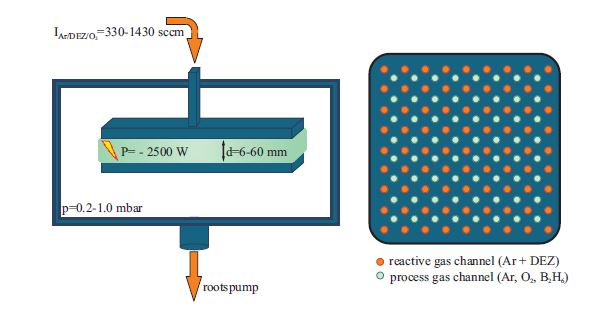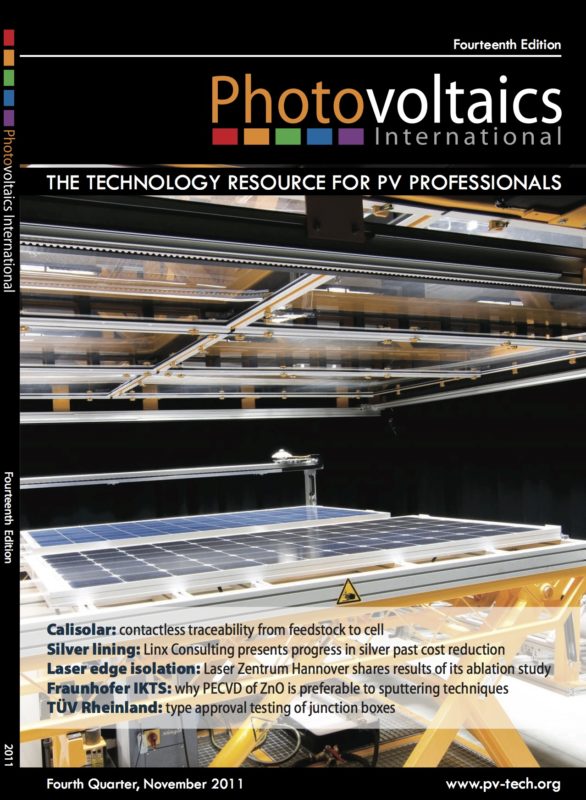By Jenny Schmidt; Alexander Michaelis; Isabel Kinski
In terms of material properties, plasma-enhanced chemical vapour deposition (PECVD) of ZnO has advantages over sputtering techniques, due to the variety of available precursors, and the different dopants for achieving certain levels of n-type and, controversially discussed, p-type transparent conductive oxides (TCOs) on various substrate materials. This paper considers the deposition of boron-doped zinc oxide for n-type TCO-application on substrates of dimensions up to 50×50cm2 and at a temperature range of 50 to 450°C using a PECVD reactor with a plasma frequency of 13.56MHz. The materials’ characteristics such as transparency, carrier concentration and structural properties are discussed as a function of the deposition parameters. The deposition temperature strongly affects the crystallographic and morphological appearance of the deposited thin films, which was investigated using field emission scanning electron microscope (FESEM) and X-ray diffraction (XRD) methods. The electronic band structure-dependent characteristics were studied using ultraviolet-visible (UV-vis) spectroscopy and Hall measurements. Secondary ion mass spectrometry (SIMS) measurements complete the characterization methods for qualitatively verifying the incorporation of dopants and impurities. Results are reported for columnar-grown boron-doped ZnO with optical transparency greater than 80% in the visible range and a maximum carrier concentration of 1020cm-3.



